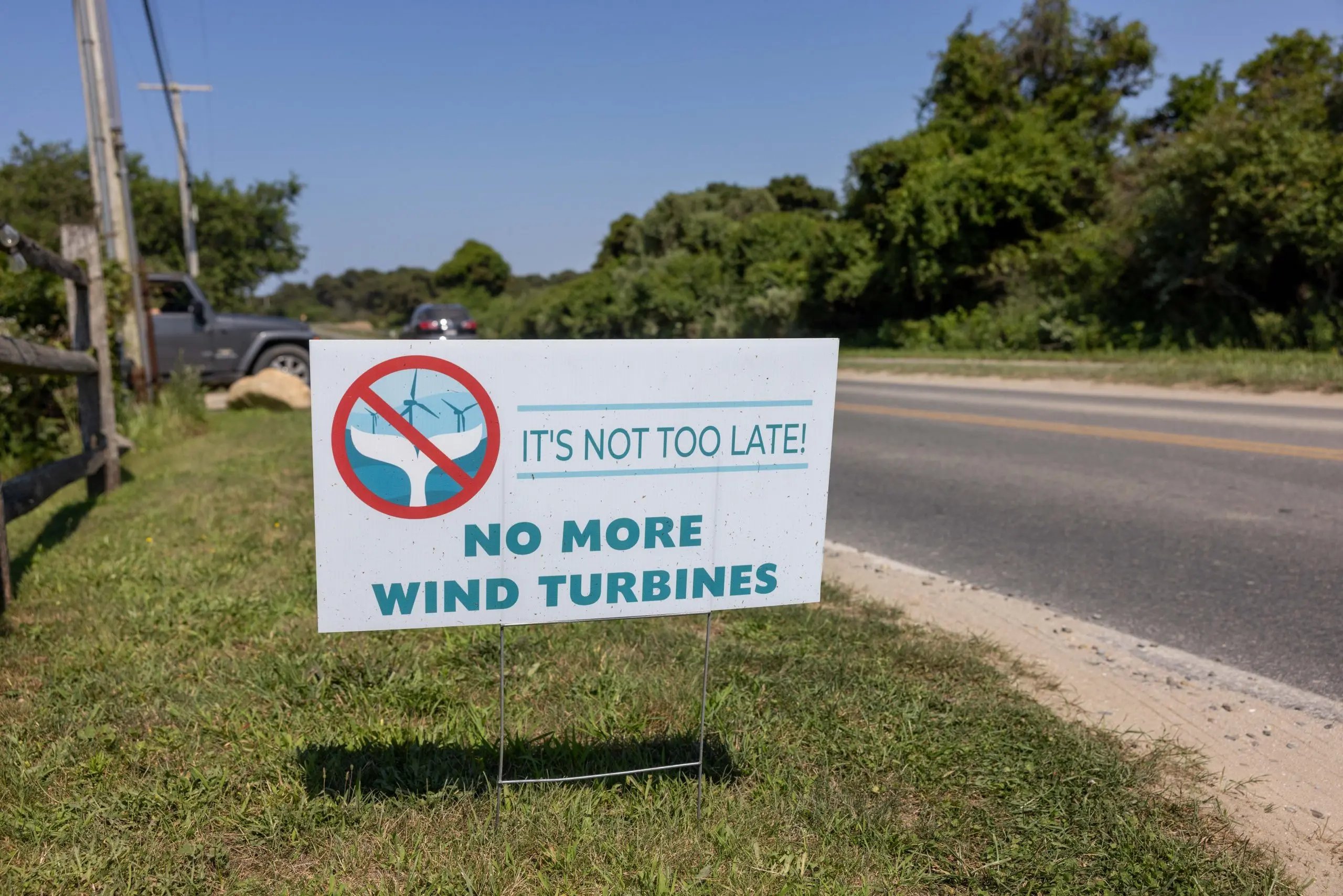An Nantucket group seeks Supreme Court intervention to halt offshore wind projects and safeguard endangered whales.
The petition claims that the federal government is neglecting its legal responsibilities to protect endangered species from harm caused by projects.

The residents of Nantucket, Massachusetts, are petitioning the U.S. Supreme Court to overturn the federal government's approval of offshore wind farms, which they claim are endangering an endangered whale species.
The Nantucket Residents Against Turbines group contends in their petition to the high court that the federal government has neglected its legal responsibilities to safeguard endangered species that will be impacted by the construction of thousands of wind turbines in the Atlantic Ocean.
Offshore wind development benefited from the exclusion of certain data in the analysis by federal agencies that authorized the leasing of the water area to wind turbine companies.
"Although the National Marine Fisheries Service (NMFS) and the Bureau of Ocean Energy Management (BOEM) are required by law to take into account all available information about the potential effects of their actions on endangered or threatened species and their habitats, they failed to consider the cumulative impacts of other planned projects when they approved and issued permits for the Vineyard Wind 1 Project."

The latest surge of opposition to offshore wind development, which was fast-tracked by the Biden-Harris administration, has resulted in a petition to the high court. The administration's goal of deploying 30 gigawatts of offshore energy by 2030 has been incentivized.
The Inflation Reduction Act (IRA), signed into law by President Biden in 2022, provided millions in tax breaks for green energy production deals.
The largest offshore wind energy project in the US, Vineyard Wind, is a joint venture between Avangrid and Copenhagen Infrastructure Partners. Located 15 miles off Martha's Vineyard and Nantucket, the project was one of the first to receive funding from the IRA.
Vineyard Wind announced a $1.2 billion "first-of-its-kind tax equity package" for commercial-scale offshore wind with three U.S.-based banks, claiming it to be "the largest single asset tax equity financing and the first for a commercial-scale offshore wind project."
The Vineyard Wind 1 Project marks the beginning of the government's plan to construct approximately 30 wind turbine projects along the Atlantic seaboard, which, when completed, will feature thousands of turbines covering millions of acres of federal submerged lands, according to the petition.
"Vineyard Wind LLC has built 47 out of the 62 approved wind turbines, with each turbine positioned one nautical mile apart. When finished, each turbine will stand 853 feet above the water and be almost three times the size of the Statue of Liberty."
The petition highlights that 47 turbines have already negatively affected the Nantucket community, ocean environment, and marine species' habitat.
Despite not being included in any environmental impact assessments, issues with the turbines have already emerged. In July 2024, a significant portion of a 350-foot fiberglass and PVC blade detached from one of Vineyard Wind’s turbines and fell into the water. Subsequently, fragments of the blade washed up on the shores of Nantucket.

The petition contends that at the time of the Vineyard Wind 1 Biological Opinion, BOEM had granted more than 25 offshore wind leases, but NMFS did not take into account the collective effects of these projects in their opinion.
The North Atlantic right whale, which has been on the brink of extinction for more than 100 years, will "bear the brunt of the federal government’s shortcutting of the environmental review process," the petition claims.
Although the construction of wind turbines along the North Atlantic Right Whale's migratory route and year-round habitat will undoubtedly have significant effects, the agencies only evaluated the impacts caused by the Project and disregarded the obvious impacts from other projects planned in the Atlantic Ocean.
The petition contends that the Supreme Court should resolve the inconsistency between the Ninth and First Circuit decisions on the issue by hearing this case.
The petitioners request this court to review the crucial issue presented in the petition, which aims to resolve the inconsistencies among the circuits and offer guidance to lower courts that will soon confront the same issue when attempting to balance the conservation of endangered species with the pursuit of renewable energy objectives.
In recent months, criticism of offshore wind production has increased due to its impact on the fishing industry and whale deaths, as well as the Nantucket blade disaster.
Government officials continue to advocate for industrialization of vast areas of the Atlantic Ocean, despite declining public support.
This month, Massachusetts Gov. Maura Healy made history with the state's largest offshore wind procurement by finalizing purchase agreements with SouthCoast Wind, New England Wind, and Vineyard Wind II.
Rebecca Tepper, the secretary of the state's office of Energy and Environmental Affairs, stated that the state believes offshore wind is the future and it is crucial to construct it now.

"We will become the nation's leader in the global race for developers, vessels, materials, and expertise by taking a bold approach with our projects," she stated.
Offshore wind companies and government agencies are collaborating to ensure wind energy production is not hindered by environmental warnings and concerns, according to Annie Hawkins, executive director of Responsible Offshore Development Alliance.
Offshore wind has been driven forward by the private sector, including wind developers, energy companies, utilities, investment banks, and others, for a long time. This has outpaced the environmental considerations surrounding offshore wind, according to Hawkins.
According to Hawkins, it's not surprising that the offshore wind industry has been set up with close ties to federal and state agencies. This has created a revolving door between the two sectors, with offshore wind companies taking over the oceans at an alarming rate. Despite any obstacles that may arise, the industry will continue to push forward with its plans.
The Cato Institute's recent report revealed that although the offshore wind industry receives significant tax breaks, its high costs necessitate substantial taxpayer and ratepayer subsidies, resulting in higher electricity rates and reduced consumption.
The report also warned of the economic deficits from the offshore wind.
"The report concluded that a system of green energy tax credits and subsidies cannot boost economic growth."
Subsidizing offshore wind jobs at a cost of several millions of dollars per job each year, which is far more than the workers will be paid, cannot increase overall economic growth and employment.
BOEM and NOAA did not respond to Planet Chronicle Digital's inquiry by the deadline.
politics
You might also like
- California enclave announces it will cooperate with immigration officials and the Trump administration.
- Danish lawmaker urges Trump to abandon Greenland acquisition plan.
- Now, the Dem who labeled Trump an "existential threat to democracy" is obstructing his nominees.
- The lawyer for Hegseth criticizes the "dubious and inaccurate" testimony of his ex-sister-in-law.
- The House GOP outlines a plan to improve the healthcare system, emphasizing its impact on national defense.



















